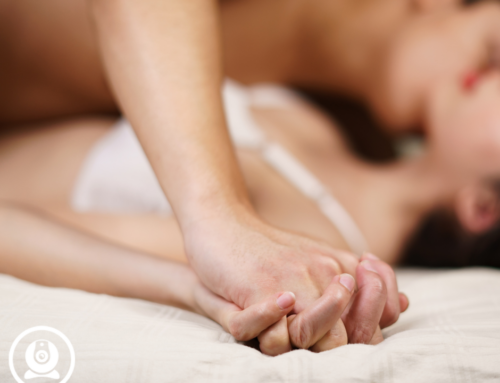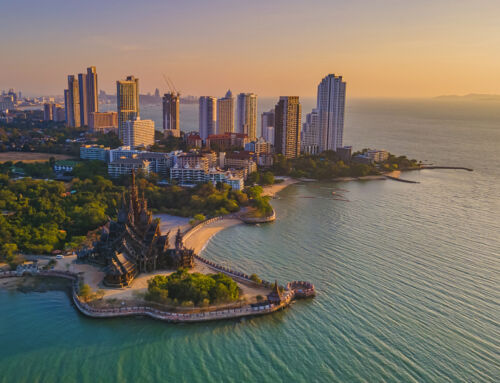Across from a Pret a Manger near Union Square Park, Nicolette Barischoff held still as an artist painted an open blue eye across her sternum on Sunday. It was around 88 degrees and a crowd had assembled around them to observe the Across from a Pret a Manger near Union Square Park, Nicolette Barischoff held still as an artist painted an open blue eye across her sternum on Sunday. It was around 88 degrees and a crowd had assembled around them to observe the bodypainting. But the temperature and the audience did not faze Ms. Barischoff. Nor did the fact that she was naked.
“It’s a very Zen experience,” she said, as photographers snapped pictures from behind police barricades. “This is my fishing.”
Ms. Barischoff, 38, a writer in Los Angeles, was among the 60 people who had paid $100 to become mostly nude human canvases for 40 artists during NYC Bodypainting Day, a public art exhibition that has been staged annually since 2014. This year’s installment was the 10th — and the last, according to the event’s founder, Andy Golub, an artist. He said he was ending it to focus on other projects for his organization, Human Connection Arts.
Nije Durdeen, 31, came from Philadelphia to model after learning she might not get another chance. “You get to be nude in public and not get arrested,” she said while standing near a table holding bottles of Gatorade in shades almost as vibrant as the turquoise-colored paint covering the right side of her body.
Ms. Durdeen has been a body-paint model for about seven years. Though she has done some gigs at artists’ studios, she said she preferred to be painted in public so she could observe a broader spectrum of reactions. Some passers-by at this year’s Bodypainting Day blushed and sped past as artists decorated people of all shapes and sizes. Others leered or snapped photos.
“Art is supposed to be subjective,” Ms. Durdeen said. “Some people may be offended. Some people, this might be right up their alley.”
Mr. Golub, 57, began using bodies as canvases in 2007 after another artist introduced him to a body-painting model. He said that he found skin to be a canvas like no other, in part because it belonged to living, breathing people whose personalities would often influence artists’ final design.
In 2011, he was arrested and charged with violating public-exposure laws for painting a nude model in Times Square. The charges were later dropped. Not long after, he said, other artists began to ask him how to body paint in public. Bodypainting Day, he added, has always been staged in coordination with the city, and is a way for artists to practice without fear of police interference.
“The final product is cool, but it’s the entire process that I really wanted people to see,” Mr. Golub said.
The event, perhaps not surprisingly, has had its critics. David Pumo, who has modeled at multiple installments, said that when Bodypainting Day was held at a park in Brooklyn, in 2019, some people showed up in protest arguing that nude bodies should not be painted in an area with children.
Mr. Pumo, 62, a lawyer in Brooklyn, said he thought such complaints blurred the distinction between nudity and sexualization. “This is not a sexual event,” he said as an artist painted his bald head during this year’s festivities. As he spoke, another model with delicate white flowers painted on her limbs ate from a Sweetgreen takeout bowl.
Body art is probably among the oldest art forms, said Bella Volen, an artist and gallery owner who teaches body-art history as part of a training program led by the World Bodypainting Association. Temporary paint has been used to commemorate rituals and rites of passage by the Kayapó tribe in Brazil, by Aboriginal people in Australia, by several tribes in Africa and by Native Americans.
Throughout the 20th century, body painting became more commercial as some began to use it as an expression of freedom or provocation. In the 1960s, the artist Yves Klein instructed women coated in blue paint to press themselves against canvases in front of a live audience. Women with painted bodies began appearing in the pages of magazines, including Playboy, Sports Illustrated and Vanity Fair, which featured Demi Moore with a suit painted over her nude body on a 1992 cover.
The practice’s many adaptations — and its commercialization — can easily veer into the territory of being appropriative, said Fred Myers, a professor of anthropology at New York University who specializes in Indigenous groups in Western Australia. “You’re taking something on yourself as a kind of play which for other people are very serious parts of their identity,” he said.
Alex Barendregt, the director of the World Bodypainting Association, which has been holding its own festival in Austria since 1998, said that some of its members had criticized Bodypainting Day for treating body painting more as a spectacle than an art form.
The event in Austria, the World Bodypainting Festival, is organized as a competition: Artists submit portfolios and compete to win prizes in different categories. Bodypainting Day typically has not chosen artists based on their work, instead basing the decision on the reasons artists give for wanting to participate. (The artists at Bodypainting Day, unlike the models, were not charged to attend.)
Mr. Golub said he had been told many times that his event was a publicity stunt. But Bodypainting Day has always been more about creating a communal, artistic environment than showcasing work of the highest quality, he added.
Veronika Eber, 18, a first-time participant at this year’s event, said she had never painted a body before. She attended Bodypainting Day to broaden her skill-set before beginning her studies in art at Carnegie Mellon University this fall.
Ms. Eber said she enjoyed the challenges posed by an unfamiliar canvas: “It’s so much harder because you have to keep in mind the curvature of the human body,” she said
She used a narrow brush to trace triangles across the torso of Catherine Stein, 70, a first-time model at this year’s event. “I thought I would be more inhibited,” said Ms. Stein, who lives in New York and works at an arts organization. “It’s such a body-positive experience.”
Once all the models’ bodies had been painted, the colorful group walked to Washington Square Park, passing diners at outdoor tables and people waiting outside of a veterinary clinic along the way.
After posing for a group photo in front of a statue of George Washington on horseback, several models climbed onto the top level of a double-decker bus bound for Brooklyn, their body art slightly smeared by hugs and hours of wear.
Among them was Ms. Barischoff, who by then had a pair of hands painted around her midsection, along with the eye on her chest. She, like many models, had attended past installments of Bodypainting Day, and she said that one of her favorite parts of the event was surprising people in a city where many think they’ve seen it all.
“That it’s the last one is still kind of shattering,” she said. “I love being somebody’s ‘only in New York’ moment.”
. But the temperature and the audience did not faze Ms. Barischoff. Nor did the fact that she was naked.
“It’s a very Zen experience,” she said, as photographers snapped pictures from behind police barricades. “This is my fishing.”
Ms. Barischoff, 38, a writer in Los Angeles, was among the 60 people who had paid $100 to become mostly nude human canvases for 40 artists during NYC Bodypainting Day, a public art exhibition that has been staged annually since 2014. This year’s installment was the 10th — and the last, according to the event’s founder, Andy Golub, an artist. He said he was ending it to focus on other projects for his organization, Human Connection Arts.
Nije Durdeen, 31, came from Philadelphia to model after learning she might not get another chance. “You get to be nude in public and not get arrested,” she said while standing near a table holding bottles of Gatorade in shades almost as vibrant as the turquoise-colored paint covering the right side of her body.
Ms. Durdeen has been a body-paint model for about seven years. Though she has done some gigs at artists’ studios, she said she preferred to be painted in public so she could observe a broader spectrum of reactions. Some passers-by at this year’s Bodypainting Day blushed and sped past as artists decorated people of all shapes and sizes. Others leered or snapped photos.
“Art is supposed to be subjective,” Ms. Durdeen said. “Some people may be offended. Some people, this might be right up their alley.”
Mr. Golub, 57, began using bodies as canvases in 2007 after another artist introduced him to a body-painting model. He said that he found skin to be a canvas like no other, in part because it belonged to living, breathing people whose personalities would often influence artists’ final design.
In 2011, he was arrested and charged with violating public-exposure laws for painting a nude model in Times Square. The charges were later dropped. Not long after, he said, other artists began to ask him how to body paint in public. Bodypainting Day, he added, has always been staged in coordination with the city, and is a way for artists to practice without fear of police interference.
“The final product is cool, but it’s the entire process that I really wanted people to see,” Mr. Golub said.
The event, perhaps not surprisingly, has had its critics. David Pumo, who has modeled at multiple installments, said that when Bodypainting Day was held at a park in Brooklyn, in 2019, some people showed up in protest arguing that nude bodies should not be painted in an area with children.
Mr. Pumo, 62, a lawyer in Brooklyn, said he thought such complaints blurred the distinction between nudity and sexualization. “This is not a sexual event,” he said as an artist painted his bald head during this year’s festivities. As he spoke, another model with delicate white flowers painted on her limbs ate from a Sweetgreen takeout bowl.
Body art is probably among the oldest art forms, said Bella Volen, an artist and gallery owner who teaches body-art history as part of a training program led by the World Bodypainting Association. Temporary paint has been used to commemorate rituals and rites of passage by the Kayapó tribe in Brazil, by Aboriginal people in Australia, by several tribes in Africa and by Native Americans.
Throughout the 20th century, body painting became more commercial as some began to use it as an expression of freedom or provocation. In the 1960s, the artist Yves Klein instructed women coated in blue paint to press themselves against canvases in front of a live audience. Women with painted bodies began appearing in the pages of magazines, including Playboy, Sports Illustrated and Vanity Fair, which featured Demi Moore with a suit painted over her nude body on a 1992 cover.
The practice’s many adaptations — and its commercialization — can easily veer into the territory of being appropriative, said Fred Myers, a professor of anthropology at New York University who specializes in Indigenous groups in Western Australia. “You’re taking something on yourself as a kind of play which for other people are very serious parts of their identity,” he said.
Alex Barendregt, the director of the World Bodypainting Association, which has been holding its own festival in Austria since 1998, said that some of its members had criticized Bodypainting Day for treating body painting more as a spectacle than an art form.
The event in Austria, the World Bodypainting Festival, is organized as a competition: Artists submit portfolios and compete to win prizes in different categories. Bodypainting Day typically has not chosen artists based on their work, instead basing the decision on the reasons artists give for wanting to participate. (The artists at Bodypainting Day, unlike the models, were not charged to attend.)
Mr. Golub said he had been told many times that his event was a publicity stunt. But Bodypainting Day has always been more about creating a communal, artistic environment than showcasing work of the highest quality, he added.
Veronika Eber, 18, a first-time participant at this year’s event, said she had never painted a body before. She attended Bodypainting Day to broaden her skill-set before beginning her studies in art at Carnegie Mellon University this fall.
Ms. Eber said she enjoyed the challenges posed by an unfamiliar canvas: “It’s so much harder because you have to keep in mind the curvature of the human body,” she said
She used a narrow brush to trace triangles across the torso of Catherine Stein, 70, a first-time model at this year’s event. “I thought I would be more inhibited,” said Ms. Stein, who lives in New York and works at an arts organization. “It’s such a body-positive experience.”
Once all the models’ bodies had been painted, the colorful group walked to Washington Square Park, passing diners at outdoor tables and people waiting outside of a veterinary clinic along the way.
After posing for a group photo in front of a statue of George Washington on horseback, several models climbed onto the top level of a double-decker bus bound for Brooklyn, their body art slightly smeared by hugs and hours of wear.
Among them was Ms. Barischoff, who by then had a pair of hands painted around her midsection, along with the eye on her chest. She, like many models, had attended past installments of Bodypainting Day, and she said that one of her favorite parts of the event was surprising people in a city where many think they’ve seen it all.
“That it’s the last one is still kind of shattering,” she said. “I love being somebody’s ‘only in New York’ moment.”







Leave A Comment